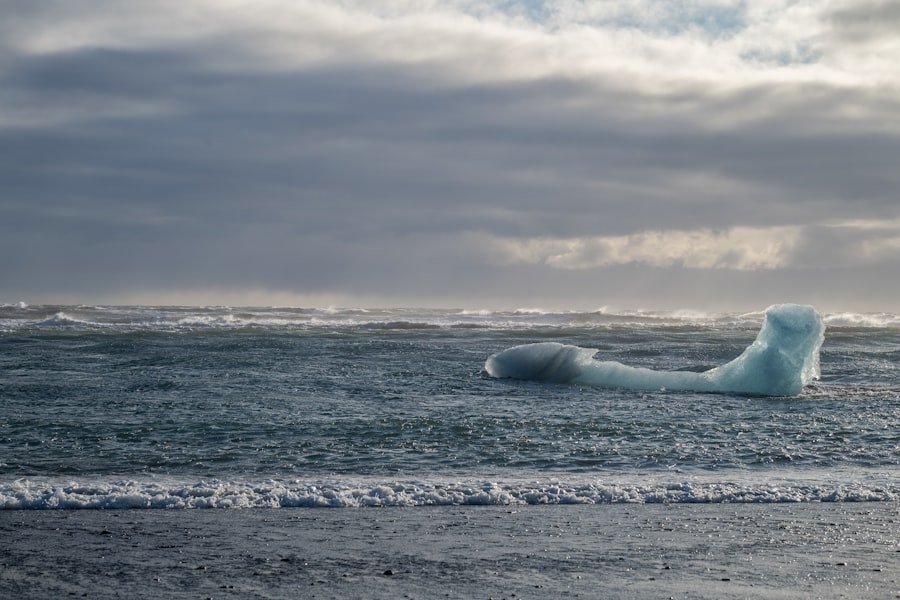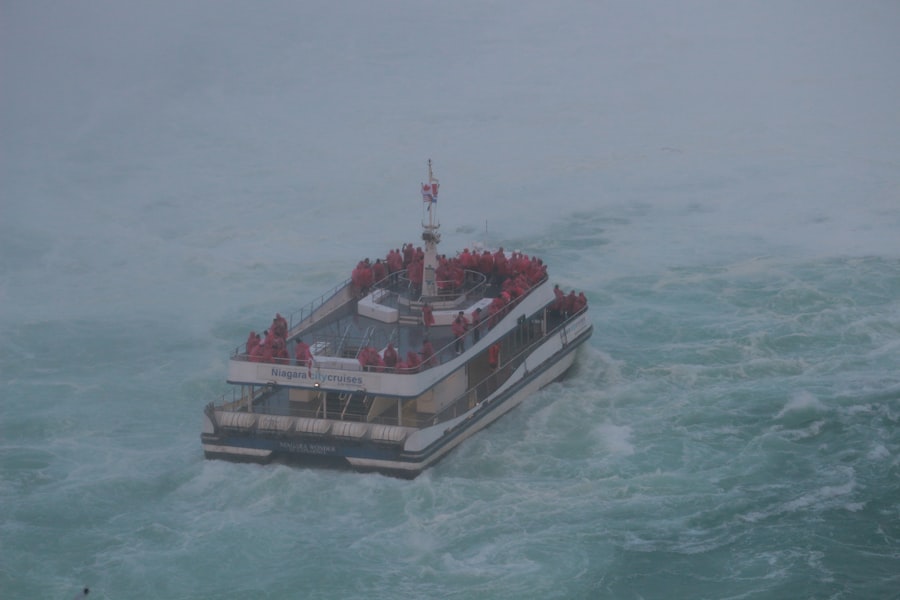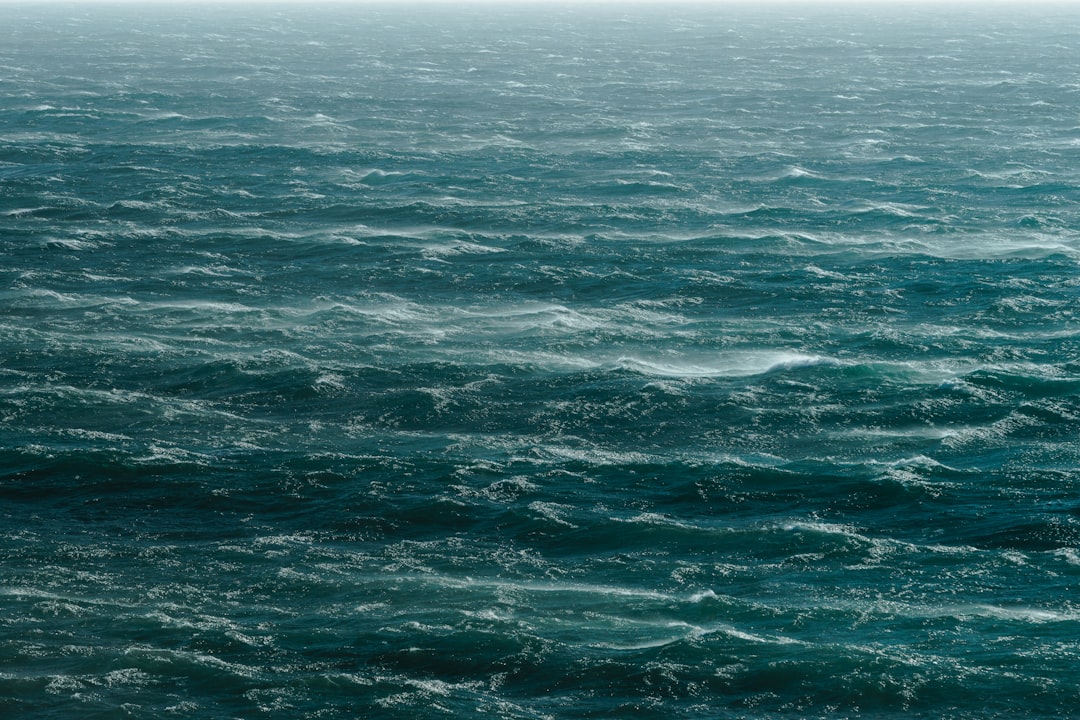The Drake Passage, a body of water situated between the southern tip of South America and Antarctica, is renowned for its tumultuous seas and unpredictable weather patterns. This narrow stretch of ocean, approximately 800 kilometers wide, serves as a critical conduit for maritime traffic between the Atlantic and Pacific Oceans. Its unique geographical position contributes to the formation of some of the most challenging sea conditions in the world, making it a focal point for sailors, researchers, and adventurers alike.
The passage is not only a vital route for commercial shipping but also a popular destination for expedition cruises seeking to explore the pristine landscapes of Antarctica. The waters of the Drake Passage are characterized by their strong currents and high winds, which can create formidable waves and swells. The confluence of the Antarctic Circumpolar Current, which flows unimpeded around the continent of Antarctica, and the various weather systems that sweep through the region results in a dynamic marine environment.
This combination of factors makes the Drake Passage infamous among mariners, who often regard it as a rite of passage due to its potential for severe weather and rough seas. Understanding the intricacies of this passage is essential for anyone planning to navigate its waters.
Key Takeaways
- The Drake Passage is a narrow stretch of water between South America’s Cape Horn and the South Shetland Islands of Antarctica, known for its challenging sea conditions and strong winds.
- Sea state forecasts are crucial for maritime safety and efficient passage planning in the Drake Passage, as they provide information on wave height, period, and direction.
- Factors affecting sea state in the Drake Passage include wind speed and direction, ocean currents, and the presence of icebergs and sea ice.
- Tools and resources for sea state forecast in the Drake Passage include satellite data, weather buoys, and meteorological models, which provide real-time and predictive information.
- Interpreting sea state forecast information involves understanding wave characteristics, wind patterns, and potential hazards to make informed decisions for navigation.
- Planning and preparation for navigating the Drake Passage require thorough route planning, vessel readiness, and crew training to handle challenging sea conditions.
- Safety considerations for sea state forecast in the Drake Passage include vessel stability, crew safety, and emergency response preparedness in case of adverse weather.
- Tips for navigating the Drake Passage in challenging sea conditions include maintaining a slow and steady speed, securing loose items on board, and staying alert for changing weather patterns.
- Monitoring sea state during passage involves continuous observation of wave behavior, wind changes, and any deviations from the forecasted conditions.
- Adjusting plans based on sea state forecast updates may involve altering course, seeking shelter, or adjusting speed to ensure safe and efficient passage.
- Post-passage reflection and analysis of sea state forecast accuracy allows for learning and improvement in future navigations through the Drake Passage.
Importance of Sea State Forecast
The significance of accurate sea state forecasting in the Drake Passage cannot be overstated. For vessels traversing this challenging waterway, having reliable information about wave heights, wind speeds, and overall sea conditions is crucial for ensuring safety and operational efficiency. A well-informed captain can make strategic decisions that mitigate risks associated with navigating through turbulent waters.
The consequences of neglecting to heed sea state forecasts can be dire, ranging from minor inconveniences to catastrophic incidents that jeopardize both crew and vessel. Moreover, sea state forecasts play a pivotal role in voyage planning. By understanding the expected conditions, mariners can optimize their routes, adjust their schedules, and prepare their vessels accordingly.
This foresight not only enhances safety but also improves the overall experience for passengers on board. In an environment as unpredictable as the Drake Passage, where conditions can change rapidly, having access to accurate forecasts is an invaluable asset for any navigator.
Factors Affecting Sea State in the Drake Passage

Several factors contribute to the complex sea state experienced in the Drake Passage. One of the primary influences is the geography of the region itself. The narrowness of the passage funnels ocean currents and wind patterns, intensifying their effects.
The Antarctic Circumpolar Current, which flows continuously around Antarctica, generates significant wave activity as it interacts with other oceanic currents and local weather systems. This interaction can lead to steep waves and choppy seas that pose challenges for vessels attempting to navigate through.
The Drake Passage is frequently subjected to powerful storms that originate from both the Southern Ocean and the Pacific Ocean. These storms can bring strong winds and heavy precipitation, further complicating navigation. Seasonal variations also affect sea state; during certain times of the year, such as winter months, conditions can become particularly severe due to increased storm activity.
Understanding these factors is essential for mariners seeking to anticipate and respond to changing sea conditions.
Tools and Resources for Sea State Forecast
| Tool/Resource | Description | Provider |
|---|---|---|
| Buoy Data | Real-time data on wave height, period, and direction | NOAA, WMO |
| Wave Models | Numerical models for forecasting sea state | ECMWF, Wavewatch III |
| Satellite Imagery | Visual data on ocean surface conditions | NASA, ESA |
| Forecast Websites | Online platforms for accessing sea state predictions | Windfinder, Magicseaweed |
Navigators in the Drake Passage have access to a variety of tools and resources designed to provide accurate sea state forecasts. One of the most widely used resources is satellite-based weather data, which offers real-time information on wind speeds, wave heights, and atmospheric pressure systems. This data is invaluable for making informed decisions about when to set sail or alter course.
Additionally, many maritime organizations provide specialized forecasting services tailored to the unique challenges posed by the Drake Passage. Another important tool is numerical weather prediction models, which utilize complex algorithms to simulate atmospheric conditions and predict future weather patterns. These models take into account various factors such as temperature, humidity, and wind direction to generate forecasts that can be relied upon by mariners.
Furthermore, local knowledge from experienced sailors who have navigated the passage can provide insights that complement technological resources. By combining these tools with firsthand experience, navigators can enhance their understanding of sea state conditions in this challenging environment.
Interpreting Sea State Forecast Information
Interpreting sea state forecast information requires a keen understanding of meteorological terminology and an ability to analyze data effectively. Forecasts typically include details about wave height, period, and direction, as well as wind speed and direction. For instance, a forecast indicating significant wave heights of over 4 meters may signal rough conditions that could be hazardous for smaller vessels.
Understanding these metrics allows mariners to gauge the severity of expected conditions and make informed decisions about their passage. Additionally, it is essential for navigators to consider not only the immediate forecast but also potential changes that may occur during their journey. Weather systems can evolve rapidly in the Drake Passage, leading to sudden shifts in sea state.
Therefore, mariners must remain vigilant and continuously monitor updates throughout their passage. By developing a comprehensive understanding of how to interpret forecast information, sailors can better prepare themselves for the challenges that lie ahead.
Planning and Preparation for Navigating the Drake Passage

Effective planning and preparation are paramount when navigating the Drake Passage. Mariners must take into account not only the current sea state forecast but also their vessel’s capabilities and limitations. This includes assessing factors such as hull design, stability, and engine power to ensure that the vessel is equipped to handle potentially rough conditions.
Additionally, crew training plays a critical role in preparing for navigation through challenging waters; experienced crew members can make a significant difference in managing emergencies or unexpected situations. Incorporating contingency plans into voyage preparations is also essential. Mariners should consider alternative routes or safe havens where they can seek shelter if conditions become too severe.
Having a well-thought-out plan allows crews to respond effectively to changing circumstances while minimizing risks associated with navigating through unpredictable waters. By prioritizing thorough planning and preparation, sailors can enhance their chances of successfully traversing the Drake Passage.
Safety Considerations for Sea State Forecast
Safety considerations are paramount when interpreting sea state forecasts for navigation in the Drake Passage. Mariners must recognize that even with accurate forecasts, unforeseen circumstances can arise that may compromise safety. Therefore, it is crucial to maintain a proactive approach by regularly reviewing updated forecasts and being prepared to adjust plans accordingly.
This includes having safety equipment readily available on board, such as life rafts, emergency beacons, and first aid supplies. Furthermore, communication plays a vital role in ensuring safety during navigation through challenging sea conditions. Mariners should establish clear lines of communication with other vessels in the area as well as with shore-based support teams.
This collaboration can provide valuable insights into current conditions and potential hazards that may not be reflected in forecasts alone. By prioritizing safety considerations and fostering effective communication practices, mariners can navigate the Drake Passage with greater confidence.
Tips for Navigating the Drake Passage in Challenging Sea Conditions
Navigating the Drake Passage during challenging sea conditions requires skillful seamanship and adaptability. One key tip is to maintain a steady course while minimizing abrupt maneuvers that could destabilize the vessel in rough seas. Experienced sailors often recommend adjusting speed based on wave patterns; reducing speed when approaching large waves can help prevent damage to both vessel and crew.
Another important consideration is managing crew fatigue during long passages through turbulent waters. Ensuring that crew members have adequate rest periods is essential for maintaining alertness and decision-making capabilities. Implementing watch schedules that allow for regular breaks can help mitigate fatigue-related risks while ensuring that someone is always monitoring conditions on deck.
By employing these strategies, mariners can enhance their ability to navigate safely through the unpredictable waters of the Drake Passage.
Monitoring Sea State During Passage
Continuous monitoring of sea state during passage through the Drake Passage is critical for ensuring safety and making informed decisions on board. Mariners should utilize onboard instruments such as anemometers and wave buoys to gather real-time data about wind speeds and wave heights. This information allows crews to assess whether conditions are aligning with initial forecasts or if adjustments need to be made.
In addition to relying on onboard instruments, maintaining communication with other vessels in proximity can provide valuable insights into current conditions. Sharing information about observed changes in sea state can help create a more comprehensive understanding of what lies ahead. By actively monitoring sea state throughout their journey, mariners can remain agile in their decision-making processes and respond effectively to any challenges that may arise.
Adjusting Plans Based on Sea State Forecast Updates
As conditions evolve during a passage through the Drake Passage, it is essential for mariners to remain flexible and willing to adjust their plans based on updated sea state forecasts. Weather systems can change rapidly in this region; therefore, staying informed about new developments is crucial for maintaining safety at sea. If forecasts indicate worsening conditions ahead, captains may need to consider altering their route or delaying departure until conditions improve.
Additionally, having contingency plans in place allows crews to respond quickly when faced with unexpected changes in sea state. Whether it involves seeking shelter in a nearby harbor or rerouting to avoid particularly treacherous areas, being prepared for adjustments ensures that safety remains a top priority throughout the journey. By embracing adaptability as part of their navigation strategy, mariners can enhance their chances of successfully traversing the challenging waters of the Drake Passage.
Post-Passage Reflection and Analysis of Sea State Forecast Accuracy
After completing a passage through the Drake Passage, it is beneficial for mariners to engage in post-passage reflection regarding sea state forecast accuracy. Analyzing how well forecasts aligned with actual conditions experienced during transit provides valuable insights that can inform future voyages. This reflection process may involve reviewing weather data alongside personal observations made during navigation.
Furthermore, sharing experiences with fellow mariners can contribute to collective knowledge about navigating this challenging waterway. By discussing discrepancies between forecasts and actual conditions encountered at sea, sailors can identify patterns or trends that may enhance future forecasting efforts. Ultimately, this commitment to continuous learning fosters a culture of safety and preparedness among those who navigate one of the world’s most formidable maritime passages—the Drake Passage.
The Drake Passage is notorious for its challenging weather conditions, which can vary dramatically. To gain a deeper insight into the factors influencing these forecasts, you might find it helpful to explore related articles that discuss the broader context of oceanic weather patterns. One such resource is available on MyGeoQuest, which provides valuable information on geographical and meteorological phenomena. You can read more about these topics by visiting this article on MyGeoQuest.
WATCH NOW! Drake Passage: Earth’s Deadliest Waters Revealed
FAQs
What is the Drake Passage?
The Drake Passage is the body of water between the southern tip of South America and the northern tip of the Antarctic Peninsula. It is known for its rough seas and challenging sailing conditions.
What is a sea state forecast?
A sea state forecast provides information about the expected conditions of the sea, including wave height, wave period, and wind speed. This information is crucial for maritime operations and navigation.
Why is a sea state forecast important for the Drake Passage?
The Drake Passage is notorious for its extreme weather and rough seas. A sea state forecast is essential for ships and vessels navigating through this area to ensure the safety of passengers and crew.
How is a sea state forecast for the Drake Passage created?
Sea state forecasts for the Drake Passage are created using a combination of satellite data, weather models, and historical data. Meteorologists and oceanographers analyze this information to predict the expected sea conditions.
Where can I find a sea state forecast for the Drake Passage?
Sea state forecasts for the Drake Passage can be obtained from various sources, including national meteorological agencies, maritime weather services, and online weather websites. It is important to use reliable and up-to-date forecasts when planning a journey through the Drake Passage.
